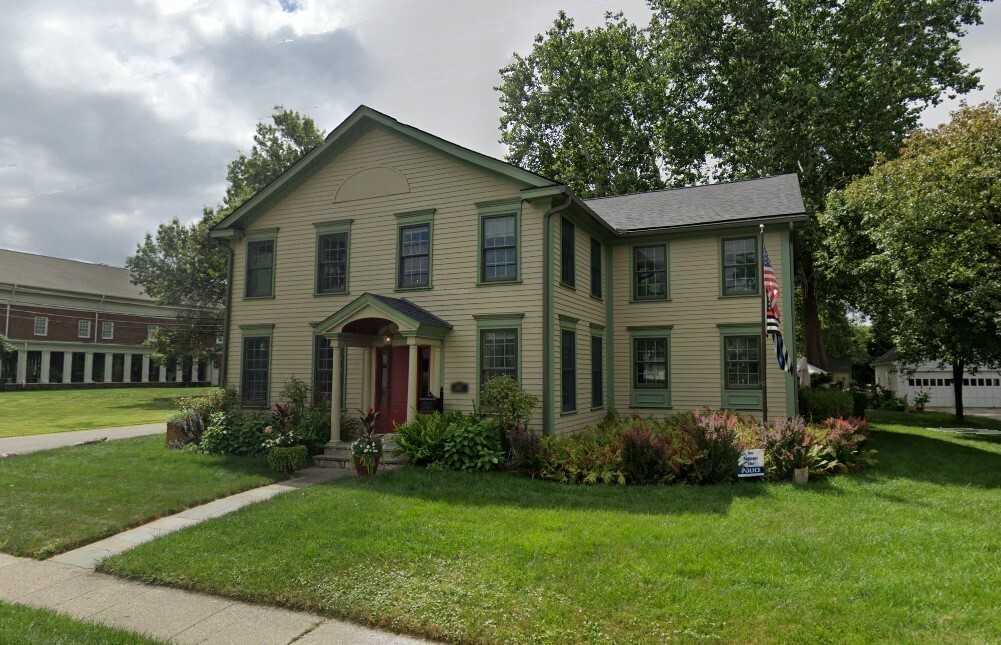“The person who says it cannot be done should not interrupt the person doing it.” – George Bernard Shaw
 I grew up in a renovator's house. My father was an executive by day and hammer-swinger evenings and weekends. When I was seven, he moved our family into a 100-year old dilapidated farm-house in Wellington, Ohio and, over the next decade, he stripped the whole place, doubled its size, and replaced darn near every door, window, and wall. As his volunteer helper, I stuck to him like glue to learn everything about being a do-it-yourselfer. Despite many people saying he would never complete it, or it was too big a job for one person or he didn't have the requisite knowledge or experience — among other even less-encouraging words — he persisted and his efforts produced a beautiful home that's admired still today some fifty years later. It was my first experience with what became a common phrase he'd utter: Don't let the ba*tards get you down.
I grew up in a renovator's house. My father was an executive by day and hammer-swinger evenings and weekends. When I was seven, he moved our family into a 100-year old dilapidated farm-house in Wellington, Ohio and, over the next decade, he stripped the whole place, doubled its size, and replaced darn near every door, window, and wall. As his volunteer helper, I stuck to him like glue to learn everything about being a do-it-yourselfer. Despite many people saying he would never complete it, or it was too big a job for one person or he didn't have the requisite knowledge or experience — among other even less-encouraging words — he persisted and his efforts produced a beautiful home that's admired still today some fifty years later. It was my first experience with what became a common phrase he'd utter: Don't let the ba*tards get you down.
Fast forward fifteen or so years to when I bought my own old house with dreams of expansion and renovation. Mine was remarkably similar to Dad's — a hundred-year-old "four square" timber-frame farmhouse that needed everything. I drew sketches and planned timetables even as I was beginning a career in Muni bonds. In a short time, I went before the city planning commission and Architectural Review Board to convince them that my dream house was attainable. They were less than encouraging and cautioned against a "perpetual" project on one of the town's main streets. At one point, a commissioner suggested it would be easier to simply demolish the place and pay someone to build what I wanted. Another of Dad's other common phrases — "The right way, the wrong way, and Dan's way" - echoed in my head and I defiantly insisted they accept my five-year plan. They gave me three and required that I come before them each year to report my progress.
I started buying tools. I poured over how-to books on block foundations, framing, wiring, and plumbing and began tearing pages out of decorating magazines. Even as the backhoe dug the first addition’s basement, I had a clear picture in my mind of the finished product. To get there I had to learn how to lay the foundation on which it would sit.
“...Dan's way.” I had studied basements and knew that most were around ten concrete blocks deep. Well! If ten is good, then eleven or twelve would be even better, right? On my instruction, the backhoe dug down and, by the end of the day, I had a twenty-foot square hole in the ground ready for me to start laying out the foundation footers in the morning. I went to bed impressed and proud, more than enthusiastic to be out there at dawn, tape measure in hand.
Dawn brought my first experience with a "Black Swan Event": that which you don't know you don't know. Unbeknownst to any of us, the backhoe had hit the water table and I, coffee cup and tape measure in hand, was aghast to see four feet of water in the bottom of the hole. After some frantic calls, I convinced the fire department to bring a pump. That call got the attention of the city code inspector who was soon looking down at the half-foot of mud at the bottom of the hole, cautioning me about attempting to pour concrete footers on anything other than dry, untouched earth. "Are you sure you don't want to get some help?". He was not at all a ba*tard but I confidently shuffled away with three inches of mud stuck to my boots, muttering about the benefits of a deep basement and back-up sump pumps. Little did I know that I'd be slowly draining the nearby lake for almost forty years.
The other side of my life, my budding investment business, was both beneficiary and victim of my belligerence to do things Dan's way. I had to learn the what and the how from the books and lessons of others and, at the same time, find my own interest from curiosity and research. This is how I came to understand the Federal Reserve and our monetary system as the foundation of our capitalist system, and to understand its workings was the equivalent of the house’s foundation: I had to dig out the mud of my understanding to use it. And I sure didn’t think I could have investment confidence until I could speak "FedSpeak", so I studied research a lot and I listened to then-Chair Alan Greenspan's every recorded word as I pulled wire and soldered copper joints at home.
My boss at the time grumbled that if I spent as much time on the phone selling bonds as I did working on the house I could pay someone to build it for me. He misunderstood the point I think but, rightly, back then he was more concerned about commissions than my ability to cut straight two-by-fours. Slowly, my business and my house were built and I learned how I avoided catastrophes like the dot-com bubble and flooded footers. My cynicism of what I think I know (...10 cement blocks deep...) makes me keenly aware to protect clients and have tarps ready when times are good and the sun is shining. Measure twice, cut once.
I've thought about those stodgy, doubtful city leaders many times since and now look at them as shoulders I stand on. In time, my investment study came to include my own experience. The sum of all of that is what I am today, from do-it yourselfer to belligerent doubter and successful financial advisor.
I've succumbed to the advice of paying someone else to do something I know I can do myself. Today it’s analyst’s services, data companies, charting feeds for raw data, and a research “team” doing the grinding and mixing that I used to do. They are learning what one client recently referred to, unsolicited, as "Dan's way" of investing money. Yeah, Dan's way, hard lessons and all.
Like most in my age category, I've experienced countless obstacles to do something long enough to be somewhat good at it. I didn't have time to even listen to the doubters who said I couldn't build both a house and a business.
Today, I can discuss renovations with a contractor because I know what’s in my home’s walls, and I have clients who consider me the investment shoulders they stand on because I know what’s in their portfolios. I think the second is probably the result of the first, and the first likely goes all the way back to what I learned wearing a nail apron with my dad.
